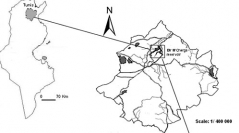

 Cryptogamie, Algologie
36 (4) - Pages 407-427
Cryptogamie, Algologie
36 (4) - Pages 407-427Proliferations of cyanobacteria are becoming increasingly widespread in many artificial reservoirs, and may have detrimental effects on ecosystem functioning, especially when the water sustains commercial fisheries. This is the case of the Bir M’Cherga reservoir in North Tunisia, where sporadic fish die-offs have been recently reported. A two-year survey investigated a dual-community structure including both phytoplankton and the main fecal bacterial indicators facing to environmental factors.
Low abundances of fecal indicator bacteria were recorded, indicating that no direct human contamination had occurred. However, the ecological status of this reservoir did show signs of degradation, Bacillariophyceae being superseded by Cyanobacteria, with a “nearlyexclusive” dominance of Planktothrix agardhii lasting several months, in association with Planktolyngbya limnetica and Pseudanabaena limnetica. In contrast, the rapid decline of P. agardhii observed in spring 2007 favored greater phytoplankton diversity, with the summer occurrence of Cylindrospermopsis raciborskii. Even though no significant relationships were identified between fish mortality and biological factors, the very presence of two bloomforming and potentially toxic cyanobacterial species may be viewed as a potentially serious issue with regard to water use and fish farming in the Tunisian reservoir.